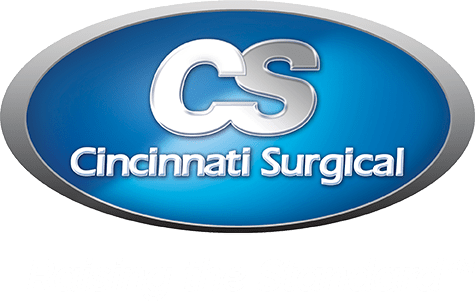All attention is focused on the patient and the job at hand in the operating room. Doctors and nurses are hyper-vigilant in sterilization, disinfection, and other stringent protocols to prevent life-threatening complications.
With so much responsibility on their shoulders as they care for others, it’s not surprising that health care workers’ personal health and safety aren’t often discussed. But accidents can and do happen in the operating room – not accidents that harm the patient, but accidents that harm the staff.
Sharps Injury Overview
The International Safety Center is a nonprofit research and advocacy organization committed to improving the safety and health of health care workers. The center introduced the Exposure Prevention Information Network (EPINet) surveillance system back in 1992 and has been tracking the frequency and types of injuries in hospitals ever since.
In its 2020 Consensus Statement and Call to Action, the International Safety Center noted that sharps injuries – wounds from needlesticks or sharp objects – have been rising over the past decade.
Operating Rooms are particularly vulnerable to sharps injuries. In the 2020 EPINet report, operating rooms recorded the largest percentage of incidents at 43.7%. In more than half of these cases, the medical devices that caused these injuries lacked sharp injury prevention features or did not have the safety mechanism activated.
Dangers from Sharps Injuries
It’s not necessarily surprising that operating rooms are one of the most common places for sharp object injuries. You have a larger group of doctors and nurses working in a tight space under a lot of pressure.
But sharps injuries can pose serious risks to staff. Even superficial injuries that result in little to no bleeding are dangerous because of the risk of infection and contamination from blood, bodily fluids, and other potentially infectious materials.
From the 2020 EPINet data, in 90.3% of cases of sharps injuries, the sharp item was contaminated.
Human immunodeficiency virus (HIV), hepatitis B (HBV), and hepatitis C virus (HCV) are just a few examples of potential pathogens health care workers may be exposed to.
Preventing Sharps Injuries
More than 20 years ago, the Needlestick Safety and Prevention Act (NSPA) was signed into law in the United States. It mandated new requirements for implementing safer medical devices, particularly medical devices with built-in safety features, and the increased use of scalpel blades with retracting blades and handles. Additionally, it mandated keeping sharps injury logs.
The “Stop Sticks” campaign, created by the National Institute for Occupational Safety & Health, was successful for the first decade. Data from EPINet and a long-term study published by the Massachusetts Department of Public Health noted a decrease in incidents between 2002 and 2007. But in the last 10 year, the number of sharps incidents have been on the rise again.
In an OR Manager article from 2018, Sharps inflicting increased wounds in the OR, the most common incidents leading to injuries were from suturing (48.6%) and cutting (10.4%). More than 50% of the injuries occurred while the health care worker was using a sharp medical instrument. Interestingly, just 5.7% of injured employees in the operating room said they were using a device with a safety design.
The International Safety Center makes the following recommendations for preventing sharps injuries from suture needles and scalpel blades:
- Increase the use of devices referred to by OSHA as Sharps with Engineered Sharps Injury Protection (SESIPs)
- Evaluate alternative methods of skin closure where appropriate (e.g., adhesives, staples, zipper closures, etc.)
- Evaluate the use of blunt-tip suture needles where appropriate
- Increase the use of scalpels with retracting blades/handles
- Implement no hands passing to protect surgical teams
- Use neutral zones
- Double glove during invasive surgical procedures – ideally, the inner gloves are a different color than the outer gloves to identify any tears easily
The International Safety Center also recommends that the decision to use devices lacking sharps injury prevention features not be left up to the individual doctor or surgeons since anyone in the operating room can sustain injuries.
Scalpel Safety Solutions
In partnership with Swann-Morton, Cincinnati Surgical offers a wide range of surgical blades and other safety devices designed to help reduce risk and injury to health care staff.
KLEEN Blade Management System – This system from Swann-Morton consists of two injection-molded plastic parts, which fully encapsulate a standard blade and protect surgical staff from injury. The system is designed to work with most standard surgical handles already in circulation throughout the hospital.
Retractable Safety Scalpels – These blades support and enhance safe passing procedures within surgical settings in the medical, dental, veterinary, pathology, and funeral industries.
Blade Removers – We have five options of blade removers to choose from, so staff never come in direct contact with a sharp blade. They can remove all sizes of surgical blades. Some are stand-alone to be included on the instrument tray in the operating room. Others can be mounted on a wall or countertop.
Safety Stitch Cutter – For removing sutures quickly and safely and this cutter can be disposed of in a sharps container.
If you want further information on safety-engineered and sharps safety products, contact Cincinnati Surgical at 1-800-544-3100 or visit our website.


Recent Comments